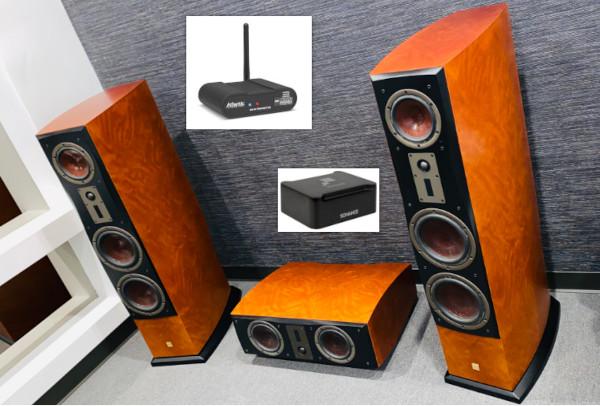I was pleasantly surprised by the ease of navigation and the wealth of information available on Optyx's website https://optyx.com/uncategorized/stay-focused-on-the-road-best-polarized-sunglasses-for-driving/ for driving sunglasses. Their diverse selection of brands, coupled with practical tips, made it simple for me to make a confident decision. I'm thrilled with my purchase and would gladly recommend Optyx to friends and family.
Can I Mix Wired and Wireless Speakers in a Dolby Atmos Setup?

Q I have Dali Euphonia MS5 speakers, each powered by Parasound Halo amps. I also have a center channel powered by a Classé amp. We’re moving into a new house and would like to add surround-sound speakers, as well as place height modules to get Dolby Atmos. Is it possible to combine wired and wireless speakers to achieve seven-channel surround with Dolby Atmos using my existing speakers? —Divyesh Patel
A Thanks for the question, Divyesh! There are a few ways to make this happen, so let me break down your options and describe what it would take to accomplish this.
First off, I always recommend going wired if at all possible. A wired connection is more reliable and gives you far more flexibility in selecting your amplification and speaker options. From the gear you mentioned, it’s clear you have a high-performing rig, so going wired would let you better match the existing performance. Before you rule it out, I’d at least have a custom installer come by and see if a retrofit is possible.
Barring that, let’s talk about going wireless. As much information as you provided, you didn’t tell me what receiver or processor you are using…or maybe you’re planning on getting a new one? If you’re happy with your current AVR/pre-pro, then there are a few options for using it with a wireless kit to beam sound to the back of the room. If your AVR/pre-pro has pre-outs for the surround channels, I’d suggest using Atlantic Technology’s WA-5030. If it doesn’t have pre-outs, then I’d use OSD’s Nero WRSKII wireless kit, which can accept speaker-level connections.
Either of these devices will transmit signals wirelessly from your AVR/pre-pro to a wireless amplifier/receiver that in turn will power rear surround speakers. First you connect the transmitter to the AVR/pre-pro. Then you connect the wireless amplifier/receiver to power and run ordinary speaker wire from it to the speakers. The thing is, both of these kits have fairly small amplifiers (30 and 25-watts/channel respectively), so they are probably not a good match for your current gear.
Another option would be to use either the Atlantic Technology WA-60 or Sonance MS Wireless Kit. These devices use the pre-outs on your AVR/pre-pro to send a line-level signal across the room to a wireless receiver to which you can connect any amplifier you like to power a rear speaker. Think of it as an invisible patch cord going from the front of the room to the back.
Now, if you want to get a new AV receiver, you could look at one of the models in Sony’s AZ line or Yamaha AVRs that support its MusicCast wireless music platform, either of which would allow you to wirelessly connect to some of their powered wireless rear speakers.
Click here for more expert advice on all things audio and video.
- Log in or register to post comments


Killeen Drywall Contractors recommends exploring wired options for reliability and performance consistency, especially given your high-quality existing gear.

Yes, you can mix wired and wireless speakers in a Dolby Atmos setup, but there are a few important considerations to ensure optimal sound quality. For the best experience, it's important that all the speakers are compatible with the Dolby Atmos system, and the wireless speakers should have low latency to avoid sync issues with wired ones. Additionally, the wireless speakers should be placed in the appropriate positions for surround sound to create a cohesive and immersive audio environment. To learn more about optimizing different experiences, check out resources like https://timhortonsmenupricescanada.com/.

Gluck33 Casino offers an impressive gaming experience, catering to a wide range of players with its diverse selection of games. From classic slot machines to live dealer tables, there is something for everyone to enjoy. The platform’s user-friendly interface and responsive customer service further enhance its appeal, ensuring a smooth and enjoyable experience. While the casino features attractive gluck33-casino.com/ promotions and bonuses, some users might find wagering requirements a bit high. Overall, Gluck33 Casino is a solid choice for both novice and experienced players looking for quality entertainment.






























































